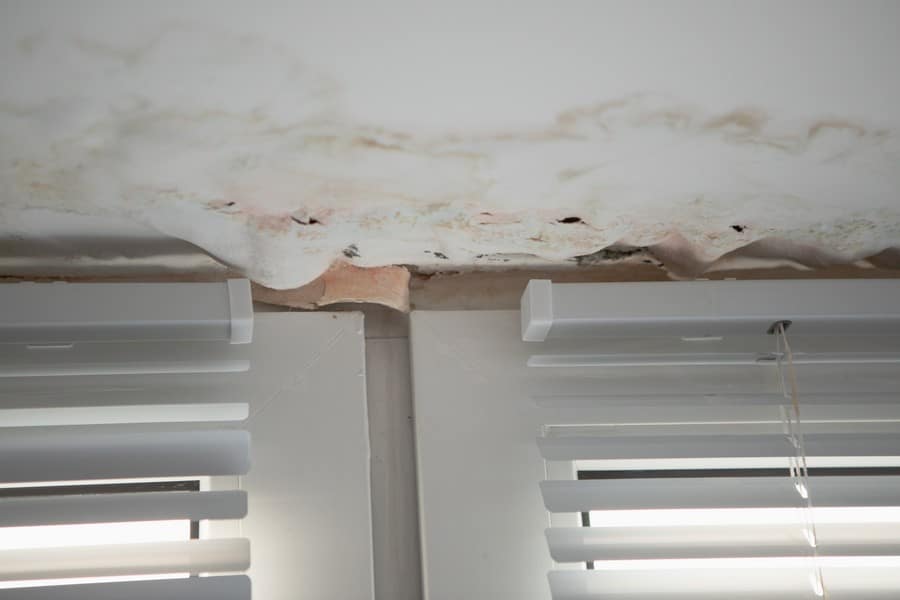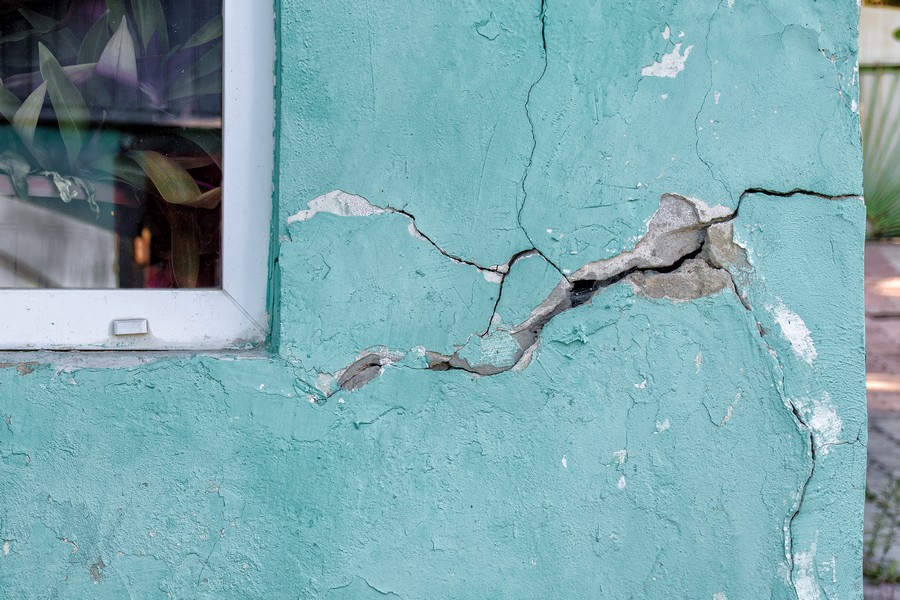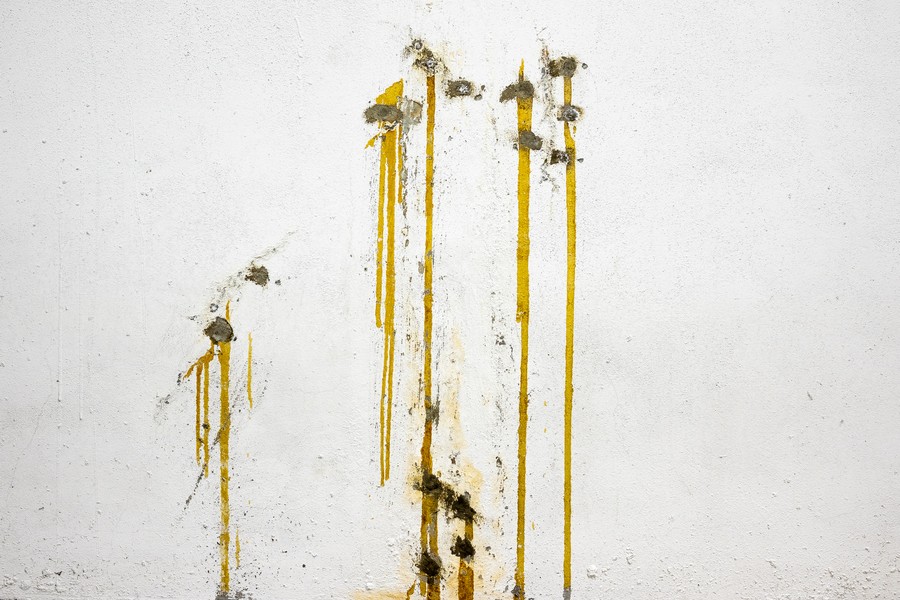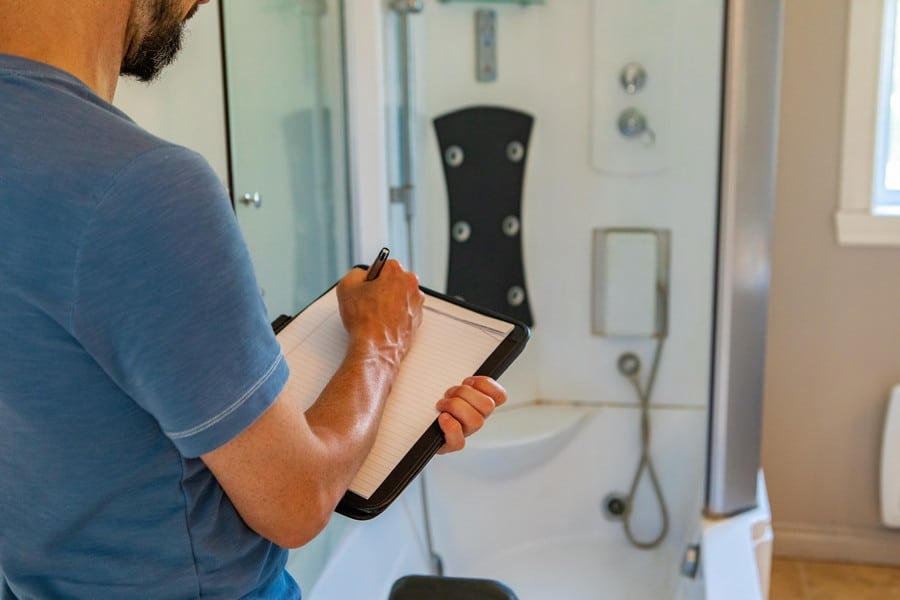Contact Sussex Damp Experts Now to Speak With an Expert.

Penetrating damp (also known as water ingress or lateral damp) is a common cause of damp in older buildings, but it can occur in residences of any age and at any level. Penetrating damp is caused by water infiltration via an external wall into the home. This can occur due to a structural issue or because exterior brick or stone walls have degraded to the point that they have become porous, allowing water to enter the dwelling through the external wall. Mould is spread through penetrating dampness. Black mould is a prevalent worry in areas where there is a lot of humidity.
The height at which rising and penetrative damp occur is the most prevalent distinction. Rising damp occurs only up to a metre above ground level, whereas penetrating damp can occur anywhere.
Water infiltrating through walls from the outside causes penetrating damp. It can happen on any level of a building, but it is more common further up. Although damp can travel horizontally within walls, it is not the same as rising damp, which moves vertically. The following are the most common causes of penetrating damp:

Because the symptoms of penetrating damp are sometimes confused with those of other types of damp, identifying damp can be difficult if you don’t know what to look for. So what are the symptoms of penetrating damp?
You should be able to recognise the indicators of penetrating damp from the following signs, regardless of size or scale:
Any watermarks on walls, windows, or ceilings indicate a penetrating moisture problem. When the surveyor inspects certain portions of the building, significant moisture readings are typically found.
If water is permitted to enter your property due to continuous periods of rainfall, damp patches will appear on the inside walls. Condensation may form in damp, chilly regions of the property as a result of this. If the damp problem has progressed to a critical level, water droplets may be seen. There will be no salts coming from the ground, unlike rising damp.
If your home is suffering from penetrating damp, the sooner you address the issue, the less damage it will cause. Contact our damp proofing team today by calling 01273 257 765 or filling out an online form to schedule a survey.
Compared to properties built with cavity walls, those built with solid walls are more prone to suffer from penetrating moisture.
The use of hollow wall construction protects against moisture intrusion. This is because cavity walls provide an air gap between the internal and external walls, preventing moisture from rapidly entering the building’s interior walls.
Property owners should be aware that having cavity walls does not automatically eliminate the risk of penetrating damp. Cavity wall insulation can cause problems by obstructing the walls, allowing water to enter the inner wall despite the presence of an air gap.
If the cavity’s outside wall is damaged, moisture will be able to seep in via the cracks and into the cavity’s interior. Damage to the cavity’s insulation could result as a result of this. Moisture is transferred from damp insulation to the building’s inner walls.
Contact Sussex Damp Experts Now to Speak With an Expert.
If you notice signs of moisture penetration, it’s always a good idea to have a damp specialist inspect your home to ensure the problem is diagnosed correctly.
A survey undertaken by one of our experts will include a thorough examination of all areas of the property for symptoms of damp and other timber-related issues. A comprehensive report will be given to you once the survey has been finished.
This will describe what was discovered during the property inspection, such as the source of the problem. It will also outline the procedures that must be taken to ensure that the penetrating damp problem does not recur in the future. You can reach out to our staff online or by calling 01273 257 765 to schedule a survey.
Sussex Damp Experts is the company to call if you need professional penetrating damp treatment. Our surveyors and experts will accurately analyse, diagnose, and treat your penetrating damp problem using cutting-edge diagnostic technology and treatment procedures.
We have over 10 years of experience in treating properties from the effects of damp, rot and woodworm. Contact our team today on 01273 257 765 or click the button below to book a survey today.
There are several reasons why your property could be affected by penetrating wetness. Common sources of damp problems include leaking or perforated pipes, cracked roofs, and blocked gutters. The weaknesses mentioned above allow moisture to permeate your property’s walls, resulting in dampness.
The extent of the wet damage and paint lifting on your interior walls becomes increasingly apparent as time passes. During the winter, when water trapped in the walls freezes and expands, causing the raised paintwork to peel, the problem is aggravated.
Rainfall can permeate buildings via leaking roofs, blocked gutters, overflows, and other water entry points, resulting in penetrating damp. Water can cause substantial structural damage to the walls and beams when it penetrates the building’s framework. This type of moisture can be identified by large stains on the ceiling, floors, walls, and interior paintwork, especially after heavy rains.
Because they are challenging to maintain due to their inaccessibility, the parapets, roofs, and chimneys are frequently the most vulnerable to the effects of severe rains. Roof junctions are the most difficult because water can infiltrate via broken water ridges, lead flashings, hips, or water fillets. The most common cause of penetrating damp is structural issues such as faulty roofs, gutters, or wall cracks. Damp may wreak havoc on a structure’s inner and exterior walls.

Call Our Sussex Damp Experts team now for quote, consultation and advice:
Call on 01273 257 765.
Identifying and correcting the cause of moisture/water ingress is the most critical stage in penetrating damp treatment. Property issues are more likely to blame for penetrating damp. Even in residential developments, there are, on average, four potential points of water entry that can impact a home:
To keep the brickwork from being saturated, all of these places must be kept in top shape, with any faults detected and problems corrected.
Water-attractive hygroscopic salts, which are transferred from the earth to the brickwork by increased wetness, will continue to draw moisture, especially during periods of high humidity. The damp-proof course will keep the dampness from rising any further. Re-plastering to the PTL specification is necessary if this occurs to an unsatisfactory degree. PTL has expert plasterers on staff and would be happy to give quotes for this job.
Penetrating damp is one of the most dangerous and damaging issues you could have in your home. This type of dampness is also known as rain penetration since it occurs when water from the outside enters the structure. Water infiltration may usually be traced back to its source and treated using low-cost solutions. Our experienced moisture-proofing specialists can assess and resolve penetrating damp problems.
Hundreds of Sussex households have turned to our damp-proofing experts. Please call us at 01273 257 765 for a survey or treatment quote if you require experienced and qualified damp-proofing professionals.
Damp proofing is a method of preventing moisture from entering a structure. Performing a small repair for damp (e.g. repointing or painting over the damp) will increase the cost of the job in the long run and require you to redo the job later.
A damp proof course is a water-resistant barrier that runs the length and width of your wall. It prevents groundwater from creeping up through the wall due to capillary action.
We can offer you a variety of damp proofing choices at Sussex Damp Experts, each with its own set of advantages. A damp proof course (DPC) is a method that aids in the control of dampness by regulating the moisture caused by capillary action.
A damp proof membrane (DPM) is a unique membrane added to a DPC to combat dampness. A DPM can use a silicone material to help manage moisture. Buildings are protected from water and moisture, including rain, using this coating process. It also contains cement, such as shotcrete, which provides moisture, water, and pressure resistance. The construction of cavity walls creates a space between the inner and outside walls to keep water out, whereas pressure grouting is used to plug any gaps in masonry walls.


A silicone-based formulation is injected into a sequence of holes made along the base of a wall that is suffering from the effects of increasing damp to create a chemical damp-proof course.
A chemical DPC, contrary to widespread assumption, does not form an impenetrable physical barrier. Chemical damp-proofing, on the other hand, is an effective method of filling the pores of a brick wall with a water repellent silicone compound. The silicone-lined pores neutralise the brick particles’ charge attraction to the water molecules, lowering adhesive attraction to a level suitable with the liquid’s cohesive force.

A simple injection applicator is used to inject the silicone-based damp-proofing cream into a series of 12mm holes drilled into the bed joint. Before curing, the injected DPC cream diffuses quickly, forming a water-repellent damp proof course that addresses dampness in brick and masonry walls. One of the most critical components of managing increasing damp in homes is the damp-proof injection procedure. It’s also one of the most efficient, providing a dependable and straightforward solution.
Water will still rise through the perp-end joints even if a chemical damp proof course system is installed in the bricks or blocks along a stretch of brickwork. Water can only climb a wall if there is a continuous channel for it to travel through. As a result, the only layer capable of acting as a moisture-proof course is the mortar bed joint.
Internally, beneath ground floor joists, or close to the floor if solid, a DPC should be placed at least 150mm above external ground level. If the two are incompatible, further safeguards to protect low-lying regions and flooring timbers may be required.
A vertical upstand is required where a wall extends beyond the new DPC, such as when the wall is part of an enlarged terrace, to prevent horizontal moisture transmission from surrounding walls. Inject the chemical into holes in a zigzag pattern that follows the mortar line up the wall to a height of at least 1 metre to create a vertical DPC.
The cream can be injected from either side of the wall. However, we recommend injecting from both sides for cavity walled brickwork. In rubble-filled walls, which are effectively cavity walls filled with rubble, damp proofing chemicals are unlikely to be successful. In such cases, an electro-osmotic system is more likely to produce superior results.
If you discover dampness in your property, act soon! Otherwise, the residents may face serious issues.
Beyond the visual soreness caused by damp problems, dampness can cause severe damage to a property’s structure and compromise structural integrity if not addressed on time. There is also evidence that it can induce respiratory difficulties, which mainly affects people who already have a respiratory problem.
Whether you have damp developing due to condensation, leaking guttering, or leaking pipes, call our damp removal and proofing experts immediately to get it fixed as soon as possible.
Our commitment to providing excellent customer service, as well as our depth and breadth of knowledge, are the foundations of our continued success.
Our team has over 10 years of combined expertise offering damp proofing in Brighton. If you are experiencing damp issues in Brighton and the surrounding areas, please call our damp specialist team on 01273 257 765 to schedule a survey or treatment.
Following our instructions, one of our CSRT and CSSW trained surveyors will thoroughly examine and provide a report, price quote and treatment suggestions.
Suppose you decide to go ahead with our damp proofing services. In that case, we have a complete team of damp proofing specialists who have a comprehensive portfolio dealing with damp problems, such as dry rot and woodworm, wet rot, wood rot, basement waterproofing, internal dampness, rain penetration, condensation control both in commercial properties and private homes.

The costs associated with addressing a damp problem depend on many different factors such as the property’s dimension and architecture, the type of damp cause, the materials involved, among others.
Because there’s a comprehensive range of details to consider, don’t hesitate to contact our fully trained team to book a survey and have one of our friendly team members inspect the property and fully understand the situation, thus providing you with the most cost-effective quote and treatment.
We adhere to high standards when it comes to damp proofing treatments, professional re-plastering, wood preservation, and damp inspections.
We provide homeowners, local governments, small enterprises, and large commercial properties with customised, professional, and dependable damp proofing treatment and repair services.
If you are experiencing damp issues in Brighton and the surrounding areas, please call our damp specialist team on 01273 257 765 to schedule a survey or treatment.
Following our instructions, one of our CSRT and CSSW trained surveyors will thoroughly examine and provide a report, price quote and treatment suggestions.
We have a team of damp proofing experts with a wide range of experience dealing with damp issues such as penetrating damp, dry rot and woodworm, wet rot, wood rot, basement waterproofing, all sorts of interior dampness, and condensation control in both commercial and residential premises.


Max and his team have been at our property all week and I really can’t thank them enough for the fantastic job they’ve done on plastering both our walls and ceilings. They have literally transformed the appearance of our house! Not only has Ma…

From start to finish Max has been incredable. His knowledge lin damp proofing is second to none and his team where very clean and polite. The plastered finish was like glass so happy we choose Max Plastering for job.

Lovely bunch of lads left a very neat and clean job. Problem was solved.

Perfect Finnish and all left clean and tidy and no mess. Used Max previously and would not hesitate to ask him carry out more work.

Max, Harvey and Stuart arrived promptly as arranged. Done a great job on our outside rear wall. Work completed to a high standard, removal of all old material and cleaned up after themselves. I am so pleased with the standard of their work they ar…

They turned up on time and carried out the works in a very professional manor leaving the front of the house clean and tidy. Very impressed would definitely recommend.

I have to say that on every level Max (with Stuart and Harvey) did an extremely professional job! They explained what they were going to do, they were polite and courteous and respected that they were coming into our home. The plastering is of the…

I called max and he managed to come around the same day to do a survey. The next day I received an extremely detailed survey compared to any other damp proofer which made me feel very at ease that he was going to do the right job. Max and team tur…

Contact Sussex Damp Experts Now to Speak With an Expert.